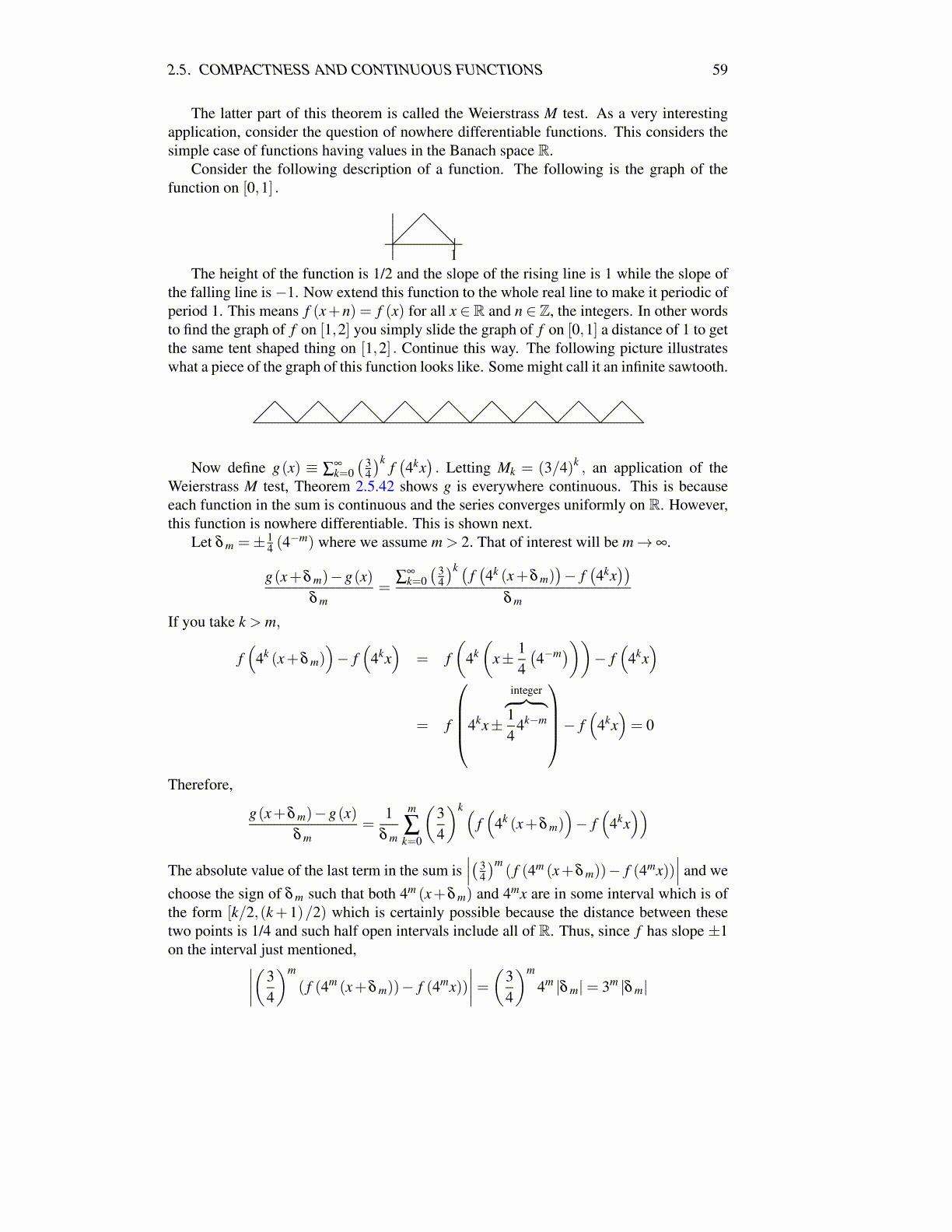
2.5. COMPACTNESS AND CONTINUOUS FUNCTIONS 59
The latter part of this theorem is called the Weierstrass M test. As a very interestingapplication, consider the question of nowhere differentiable functions. This considers thesimple case of functions having values in the Banach space R.
Consider the following description of a function. The following is the graph of thefunction on [0,1] .
1The height of the function is 1/2 and the slope of the rising line is 1 while the slope of
the falling line is−1. Now extend this function to the whole real line to make it periodic ofperiod 1. This means f (x+n) = f (x) for all x ∈ R and n ∈ Z, the integers. In other wordsto find the graph of f on [1,2] you simply slide the graph of f on [0,1] a distance of 1 to getthe same tent shaped thing on [1,2] . Continue this way. The following picture illustrateswhat a piece of the graph of this function looks like. Some might call it an infinite sawtooth.
Now define g(x) ≡ ∑∞k=0( 3
4
)kf(4kx). Letting Mk = (3/4)k , an application of the
Weierstrass M test, Theorem 2.5.42 shows g is everywhere continuous. This is becauseeach function in the sum is continuous and the series converges uniformly on R. However,this function is nowhere differentiable. This is shown next.
Let δ m =± 14 (4
−m) where we assume m > 2. That of interest will be m→ ∞.
g(x+δ m)−g(x)δ m
=∑
∞k=0( 3
4
)k (f(4k (x+δ m)
)− f
(4kx))
δ m
If you take k > m,
f(
4k (x+δ m))− f
(4kx)
= f(
4k(
x± 14(4−m)))− f
(4kx)
= f
4kx±
integer︷ ︸︸ ︷14
4k−m
− f(
4kx)= 0
Therefore,
g(x+δ m)−g(x)δ m
=1
δ m
m
∑k=0
(34
)k(f(
4k (x+δ m))− f
(4kx))
The absolute value of the last term in the sum is∣∣∣( 3
4
)m( f (4m (x+δ m))− f (4mx))
∣∣∣ and wechoose the sign of δ m such that both 4m (x+δ m) and 4mx are in some interval which is ofthe form [k/2,(k+1)/2) which is certainly possible because the distance between thesetwo points is 1/4 and such half open intervals include all of R. Thus, since f has slope ±1on the interval just mentioned,∣∣∣∣(3
4
)m
( f (4m (x+δ m))− f (4mx))∣∣∣∣= (3
4
)m
4m |δ m|= 3m |δ m|